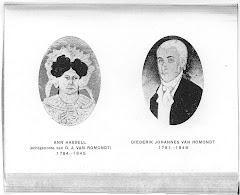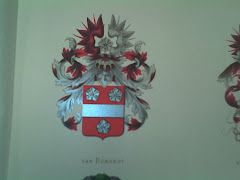
Source: Pic of remembering our Dutch Slavery by Malaki Z. Croes ( Aruba), at Slave Expocition at Plantation house Santa Martha In Curacao N.A.
Recently in the month of March 2007, Britain Commemorates Abolition of Slave Trade 200 Years Ago.
Be that as it may, Britons this week are commemorating the 200th anniversary of The Abolition of the Slave Trade Act, passed by Parliament on March 25, 1807. Yesterday a commemorative service was staged in Westminster Abbey, attended by Prime Minister Tony Blair and Queen Elizabeth II. Later, the monarch lay flowers at a memorial to those affected by slavery.
Source: http://blogcritics.org/archives/2007/03/28/041056.php
On the island of Sint Maarten slavery was ended in 1848 due to the fact that slavery was abolished on the French Part of the island, Saint Martin. Members of the van Romondt family who were active in Government and living on Sint Maarten had also experienced this history. Judith Rink Tielenius Kruythoff van Romondt wife of Johannes Willem van Romondt ( son of Diederik Johannes van Romondt and Ann Hassell) was owner of the "Golden Rock Retreat Plantation" in Cul-de-Sac, Sint Maarten, N.A. that she purchased from former Governor Willem Hendrik Rink. In the book Cul-de-Sac People by Mathias Voges (2006) several families whom beginning in St. Martin can be traced over the last hunderd years to the Cul-de-Sac of the Dutch Side of the island are described in the book such as The Scott family, The Hazel Family, The Wilson family, The Heward/Dollison family and many more.
John Willem (Johannes Willem) van Romondt was governor of Sint Maarten during the slave period on the island. On the 8th of April 1848 the French commander informed the Governor by writing that the Republic of France will declare the freeing of the slaves on the French Colonies as od the 17th of april 1848. The governor had to make certain decisions and take measures on the Dutch side of the island due to the freecall of slavery on the French part of the island, Saint Martin and the consequences that it will have for the Dutch side. The Governor sent out ships to Curacao to inform the governor in Curacao, called for soldiers and was in contact with his collegegues on the french side to discuss certain matters. This last didn`t turn out and the slave went into action. Several meetings were held with the slaves owners and the Colonial Advisory concerning the matter. Due to illness Governor John was not able to attent the meeting with the Colonial Advisory on the 6th June 1848. Old-Governor D.C. van Romondt attented the meeting instead. Other members of the van Romondt family active during this time was also August Alexander van Romondt (brother of governor Johannes Willem van Romondt). He sailed out to Holland to plead for free charges for the slave owners on Sint Maarten. On 1 July 1863 with a 21 salut shots abolition of slavery was declared on the Dutch islands Sint Maarten, Saba and Sint Eustatius. The governor read the proclamation and there were several church services held. The population celebrated the victory with many festivities. Slavetrade and slavery were now considered history and the many consequences of the emancipation are part of the general history. On the 1th July 1883 the abolition of slaves was remembered with music, dance and parades. (Source: Geschiedenis van de Nederlandse Antillen, De bovenwindse eilanden, dr. Joh. Hartog., chapter five, The Slaves).
In 2003, it was commemorated exactly hundred forty years ago that slavery was abolished in the Dutch colonies. On and around 1 July several meetings had been planned where descendants of slaves and descendants of slave holders, slave traders and dignitaries met each other and quietly stood at this black page from our common past.
In 2008 it will 145 years ago that in the Dutch colonies slavery was abolished.
The following websites give some more information:
http://nl.wikipedia.org/wiki/West-Indische_Compagnie#De_Slavenhandel
http://www.kb.nl/dossiers/slavernij/slavernij.html
http://www.herensiadisklabitut.com/index.php?page_id=12&style_id
http://www.kurahulanda.com/04a_museum_info.html
http://geschiedenis.vpro.nl/dossiers/25425144/
http://www.galeries.nl/mnexpo.asp?exponr=11466
http://landing.ancestry.co.uk/intl/uk/barbados.aspx?o_iid=31428&o_lid=31428



No comments:
Post a Comment